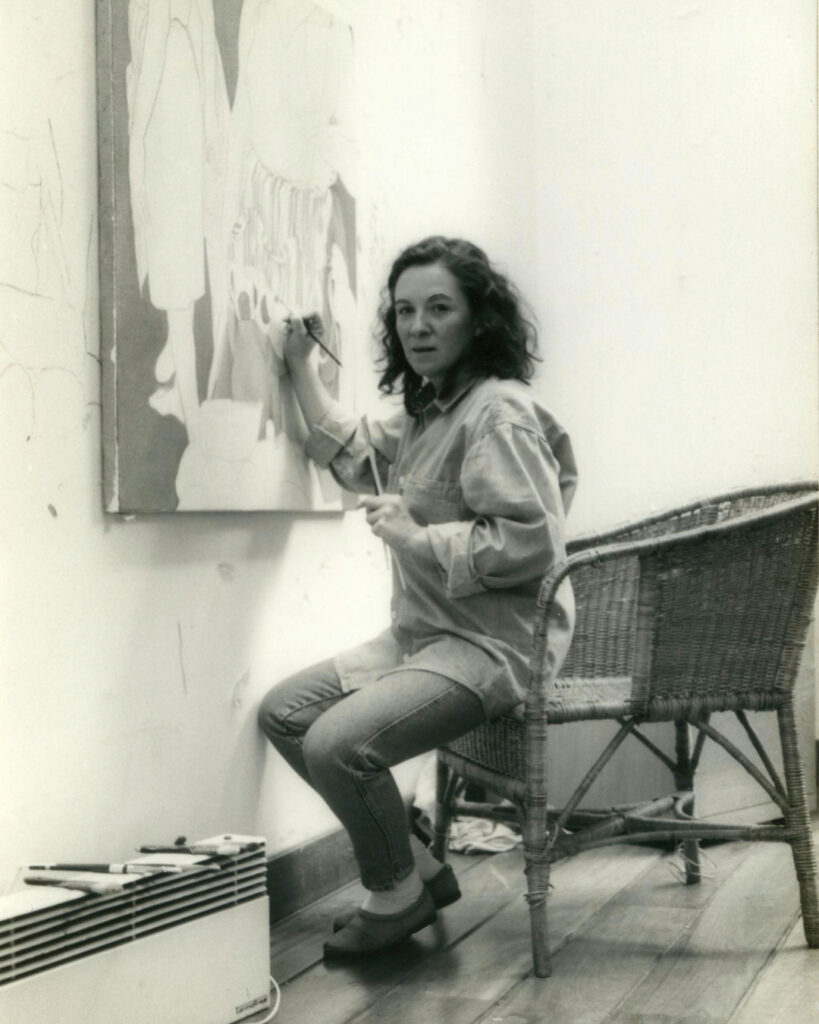
Ana Mercedes Hoyos was one of the leading Colombian female artists of the twentieth century. Based primarily in Bogotá, she established a second home and studio in New York until her death.
Hoyos’s work embraced a diverse range of imagery inspired by the post-pop movements she encountered in New York’s dynamic art scene. Her paintings included urban landscapes evocative of the surreal visions of Giorgio de Chirico and René Magritte, while also being influenced by American pop art, particularly the street scenes of Ed Ruscha. She developed the series Ventanas (Windows), initially portraying views of the sky and the mountains of Bogotá, which later evolved into figurative abstractions of architectural spaces reminiscent of Joseph Albers’s squares and Mark Rothko’s dark tonalities. Ultimately, the window was reduced to a subtle suggestion of its own frame in hard-edge paintings over raw canvas.
In the early 1980s, Hoyos created her most controversial and radical works, the Atmósferas—a series of predominantly white paintings that evoked the overcast skies of Bogotá. Following this radical phase, marked by an absence of color, she returned to an exploration of light in her series Arcoiris (Rainbows), a collection of studies on the behavior of color and refraction. Her artistic inquiry then led her back to the figure through a series of still lifes based on art historical themes. Inspired by Van Gogh, she developed a series of sunflower paintings. Later, she examined Caravaggio’s pioneering approach to still life.
While working on her series of historical still lifes, Hoyos encountered a fruit bowl on a beach in Cartagena—an experience that inspired her to explore themes related to palanganas and the people of San Basilio de Palenque. She initiated her Palenque series by depicting the bowls as geometrical compositions, employing technical drawing skills to articulate their form and using perspective to reveal both the interior and exterior of the fruit. This approach unveiled an unexpected intimacy in everyday objects, capturing the essence of her early constructivist work while celebrating the vibrancy of the Caribbean Colombian coast.
During her visits to Cartagena in the 1990s, Hoyos formed a close relationship with the local palenqueros, particularly with Zenaida, a woman who became both her friend and muse. Welcomed into their intimate community, she first visited Bazurto and later the town of San Basilio de Palenque, where she learned of their heritage and was deeply inspired by their festivities and religious processions. Hoyos produced a series of oil paintings depicting fruit bowls, market scenes, and, finally, the procession of Saint San Basilio de Palenque. The series La Procesión (The Procession) evolved into Lazos (Bows), a collection of acrylic abstractions focusing on the dresses and bows worn by young girls during the town’s procession.
Throughout her career, Ana Mercedes Hoyos demonstrated a unique ability to transition fluidly between figurative representation and abstraction, continually blurring the boundaries between the two. In a time when contemporary narratives often highlighted conflict, Hoyos set herself apart by depicting a community that, despite its historic and present struggles, maintained a jovial and resilient spirit that kept its traditions alive.